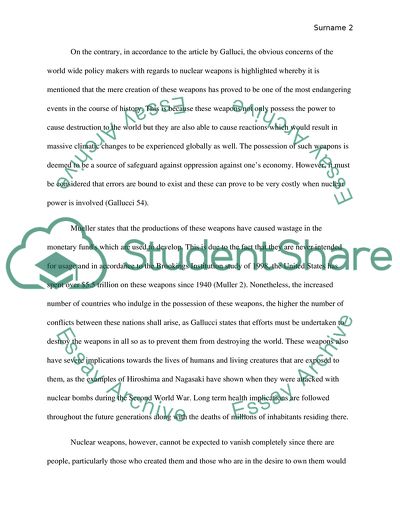Cite this document
(“The reation and Incidence of Nuclear Weapons Essay - 3”, n.d.)
Retrieved from https://studentshare.org/military/1666857-editing
Retrieved from https://studentshare.org/military/1666857-editing
(The Reation and Incidence of Nuclear Weapons Essay - 3)
https://studentshare.org/military/1666857-editing.
https://studentshare.org/military/1666857-editing.
“The Reation and Incidence of Nuclear Weapons Essay - 3”, n.d. https://studentshare.org/military/1666857-editing.


